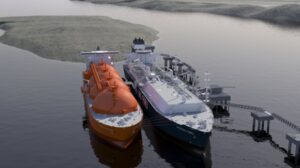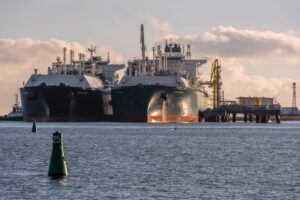Do Americans bring sand to the beach? The media are speculating on the possibility of delivering LNG from the Yamal LNG project to the USA. Although the volume and importance of such a transaction are unitary, it proves the growth of the LNG market, which is also considered prospective by Poles – writes Wojciech Jakóbik, editor-in-chief of BiznesAlert.pl.
Weather will not change the trend
On BiznesAlert.pl you can already read information about the fact that on January 22, the US Everett terminal near Boston is to be reached by a tanker with liquefied gas filled at the Grain LNG terminal. Whereas in this facility LNG supplies from Russian Yamal LNG were discharged.
– The reason is the high gas prices in America caused by low temperatures – as admitted by Kommiersant, similarly to Paweł Poprawa on BiznesAlert.pl. The Everett gas port received LNG from imports for the first time since 2014, contrary to the US policy focused on developing the exports of this raw material. Stocks in American warehouses were melting at a record pace. From the first to the fifth of January, 9.5 billion cubic metres were pumped out of them, which is a historic record, according to Kommiersant. However, the transaction rather demonstrates the global nature of the liquefied gas market. The shipment from the Yamal Peninsula has changed ownership many times. The Russian author estimates that the unitary transaction will not turn into a trend. When extreme temperatures end, the rationale for importing LNG into the USA will disappear.
By the way, this is an interesting example of how climate change affects the economy.
There will be more LNG, also in Europe
According to World Energy Outlook 2017 prepared by the International Energy Agency, LNG supplies from the USA will continue to develop. This year’s weather disaster will not change that. American deliveries are expected to reach over 60 billion cubic metres in 2020 and 120 in 2025. The main directions of supply are the European Union, Japan and South Korea, India and China. According to MAE analysts, the cost of supplies to Europe will be higher than gas pipeline deliveries from Russia, but approximately USD 6 out of USD 8 per mmBtu of the US price will be variable costs. In the case of spot supplies, it is clear that the Americans are willing to cut them in order to place the raw material on the market as quickly as possible. This is also done by successive suppliers in the chain, such as the British Centrica, which has signed a futures contract with PGNiG for up to nine cargoes at a price dependent on the European stock exchange. This Copernican breakthrough was less spectacularly appreciated in the Russian media despite the fact that it could announce a futures contract for LNG with the USA at a competitive price for supplies from Russia. It may also be used by Poles to negotiate a new contract with Gazprom, which will be independent of oil prices and more competitive than the unwanted Yamal agreement in force until 2022.
The demand of China will be an important factor moderating the supplies from the USA to world markets. The price of this raw material and the interest of American exporters in Europe, including Poland, will depend on how much LNG China will take from the market. The same will be true with the Yamal LNG loads that were originally dedicated to Asia. On BiznesAlert.pl we informed that last year the Chinese doubled LNG import volume up to 38 million tonnes (52 billion cubic metres). At that time, the aforementioned Japan and South Korea imported 83.5 (114 billion cubic metres) and 37 million tonnes (50 billion cubic metres) respectively.
It is also worth remembering that LNG supply will increase not only thanks to the USA. Australians present in Poland through SEA engineering contracts for Gaz-System increase the export of liquefied gas. For fiscal year June 2018-June 2019 it is expected to reach 76.5 million tonnes annually (104 billion cubic metres). The prospects increased from 63 million tonnes (86 billion cubic metres) announced for the corresponding period of 2017-18. The reason is the increase in production at Gorgon LNG (Chevron) and completion of three terminals – Wheatstone LNG, Ichthys LNG (Inpex), Prelude FLNG (Shell). These three projects will add about 21 million tonnes (28 billion cubic metres) to Australia’s export potential, increasing it to approximately 88 million tonnes (120 billion cubic metres) per annum. Asia is supposed to be the main export direction, but it will increase competition there, and thus the attractiveness of the European market.
In order to emphasize the importance of these volumes, it is worth reminding that the capacity of the Polish President Lech Kaczyński terminal now stands at 5 billion cubic metres per annum with a plan to expand to 7.5 billion cubic metres along with the expansion of the SCV installation and 10 billion cubic metres after the construction of the third reservoir.
The market is developing
Speculations concerning LNG from Russia in the USA have already been used in Poland to put forward a thesis that supplies to the terminal in Świnoujście are in fact also of Russian origin. This abuse of the leading medium works in favour of Russian propaganda convincing that there is no viable alternative to supplies from the East. However, it is precisely the potential supply of LNG from Russia to the USA that is another proof of market changes, which give Poles a chance to minimize imports from Russian Gazprom and to remedy its conditions.








